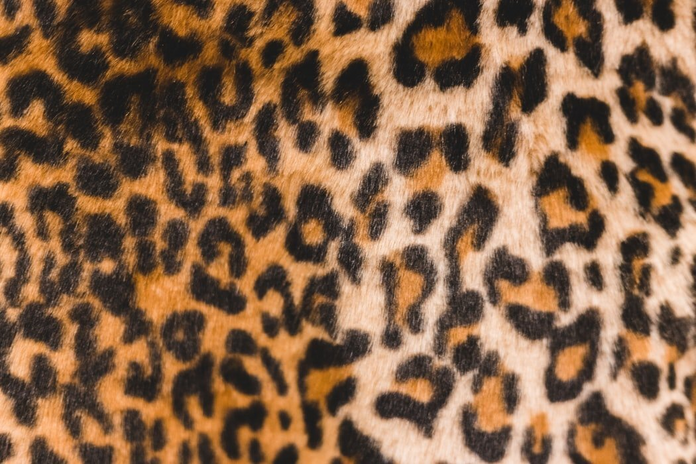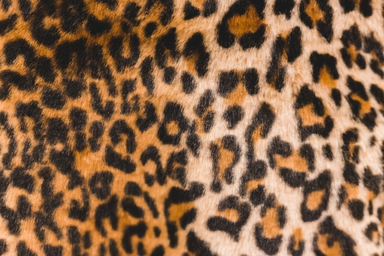Leopard print has become the must-have trend of the winter season. It’s everywhere—featured in every store and worn by men and women alike. However this pattern carries a rich history, evolving from a symbol of femininity to a bold statement of rebellion against societal norms. Let’s dive into the story of the jungle’s most fashionable animal!
The Leopard print was introduced on the podium by Christian Dior in 1947. After World War II, Monsieur Dior transformed high fashion with his groundbreaking “New Look” collection. Dior revolutionised the codes of femininity and fashion. The New Look was characterised by silhouettes of slim-fitting jackets with rounded shoulders and full, knee-length skirts. This fashion show holds a pivotal place in the history of fashion due to the transformative impact it had on women’s styles. It also represented the resurgence of Paris as a leading fashion capital, reaffirming its dominance through the art of haute couture. Among the standout pieces was the Jungle dress, inspired by the leopard. This bold pattern was seen as either sophisticated and luxurious or daring and vulgar, sparking intense debate among fashion enthusiasts. From Josephine Baker to Jackie Kennedy, leopard print became an essential staple in every fashionable woman’s wardrobe.
The style was incredbily popular in the 1960’s with upper-class women wearing leopard fur with pride and style. However, it was at the expense of the felines, since a quarter of million leopards were killed for their skins. Fortunately, in 1973, the Endangered Species Act was passed to protect these big cats. This had minimal impact on consumers and the commodifcation and the sale of the leopard only increased. The 1970s infatuation with polyester inundated stores with fake furs and synthetic printed fabrics. From coats to bikinis and dresses, everything was ‘leoparded’.
Leopard print has historically been more than just a trendy fashion choice; it has symbolized rebellion, individuality, and sensuality. While it risks appearing “tacky” if poorly styled, for many women, it embodies confidence and self-expression. This feline-inspired pattern has long been linked to a sensual, feline portrayal of femininity—celebrated as alluring yet often viewed as either daringly sexy or excessively provocative. Initially linked to wealth through its origins in exclusive fur, leopard print later became a rebellious symbol embraced by youth subcultures and diverse communities. As a subversive pattern, it challenged societal inequalities of class and gender, while evoking a provocative and controversial image of eroticized femininity. Thus, Leopard print transcends mere fashion; it stands as a symbol of women’s freedom to embrace their femininity and, at times, defy the rigid dictates of fashion and societal limits on self-expression. To some extent, Leopard may be seen as an exemplification of fashion’s broader societal role as a way to express oneself identity and resistance against societal norms.
In the 1990s, the print re-entered high fashion and mainstream culture, associated with supermodels like Naomi Campbell and feminist “Girl Power” movements led by figures like the Spice Girls. The motif was turned into a commodity by the capitalist market, which overlooked its sociological significance and deeper meaning in its pursuit of maximum profit, capitalizing on its status as a trendy symbol.
At the beginning of the century, Leopard print went through a period of relative decline since it was perceived by some as being a little ‘old-fashioned’, particularly in a context where minimalist trends and neutral colours were dominant. However, from the late 2010s onwards, leopard print made a real comeback, particularly with the rise of vintage styles and the appeal of bold patterns. Fashion designers and celebrities have reintroduced it to the catwalks and ready-to-wear collections, transforming leopard print from a ‘has-been’ into a reinvented and resolutely modern trend.
Leopard print is everywhere these days, practically prowling around every corner. Sometimes, I half-expect to be ambushed—either by an actual big cat or by a moody Londoner in the tube, walking in this print with heels clicking and faces set in a scowl. Can you imagine this “The Devil Wears Prada” vibe I am describing? Anyway, I guess you get the portrait: Leopard is currently very trendy!!!
Fashion is undeniably a cyclical phenomenon. What is out of style today may not remain so tomorrow, and vice versa. Leopard print is a prime example: once in the spotlight, it was sidelined, only to make a definitive comeback. With social media and globalization, this cycle is spinning faster than ever. As soon as a new fashion trend emerges, it vanishes just as quickly as it arrived. In essence, whilst leopard might be trendy now, it may fall out of fashion next month, and resurface again by summer. The fashion cycle keeps accelerating, in a way that is both unstoppable and unpredictable.



